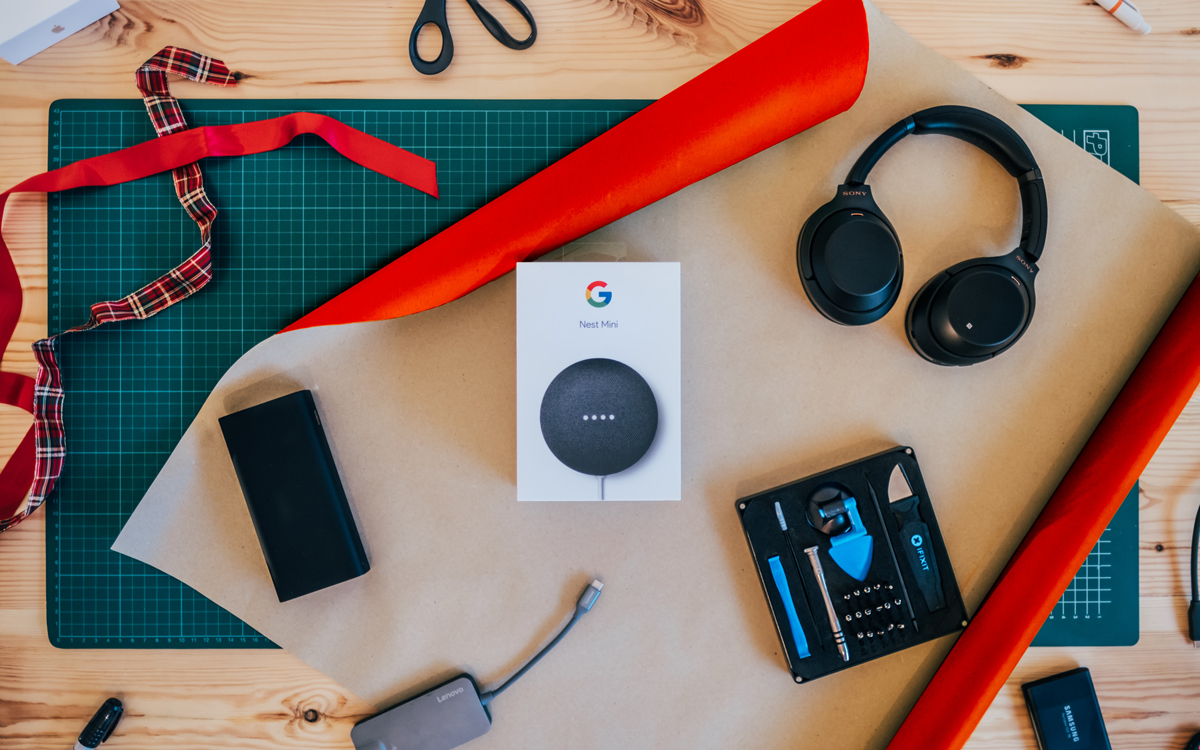Latest News
How to use tech to keep in touch with friends and family
By |
13th October, 2020 |
Categories:

These days, it’s easy to stay in contact with loved ones – if you’ve got the right tech.
There are countless internet and mobile data-based services and apps out there that will allow you to connect with family and friends, individually or in groups, at the touch of a button.
To help you decide which ones are best for you, we’ve put together a quick guide to some of the most popular options.
Whichever services you use, you and your contacts will look and sound better on a higher quality device. A good gadget is an investment worth making – but do protect it with mobile phone cover.
Why use tech?
It looks like one of the lasting legacies of the lockdown period will be a greater use of tech to connect with our nearest and dearest.
People have got used to going online to share virtual drinks with their mates, swap news with relatives, or even show grandparents their new-born grandchildren.
Some disabled people say the Covid-19 pandemic has actually opened up the world for them, as they have been able to take part in social activities that had previously been impossible due to health or access issues.
While we all fervently hope for a pandemic-free future, there are still many reasons why we might choose to go online to socialise.
Our busy lives, and the distances many of us live from our loved ones, mean that cyber connections are vital.
Instead of investing huge amounts of time and money that we do not have into travel, we can fit in a quick video call around our other commitments.
Of course, do take care if calling while you’re out and about – it’s easy to drop your device. An insurance policy for a mobile phone from Gadget Cover will cover the cost of repairing even minor screen cracks, or replace your item if it cannot be repaired.
Tech is here to stay for family and friends looking to bridge distances and stay connected. So what are the best apps and services for keeping in contact, and are there any you might have missed?

This one’s familiar to many of us, which is part of its attraction. The bright green icon is found on countless devices across the world, and can be downloaded for free if yours is not among them.
You can use WhatsApp for messaging, video or audio calls, making it a great all-rounder. It’s even possible to use it on your laptop or PC via the WhatsApp web service.
However, you can only call numbers that are in your phone contacts, and who have the app installed.
Obviously, that excludes landlines (remember them?). So you’ll only use it with people you’re happy to share your phone number with.
WhatsApp uses WiFi connections or mobile data. If you’re using mobile data, do keep an eye on the charges but overall, it’s a good choice for your far-flung friends and family.
Once you’ve begun using WhatsApp or similar services, you’ll wonder how you ever coped without it. Protect your device with smartphone insurance so you can keep calling to your heart’s content.
FaceTime
FaceTime is pretty similar to WhatsApp, but it’s available only on Apple products. So if your family and friends all have iPads or iPhones, then you’re good to go. If not – pick an alternative.
FaceTime’s big advantage over WhatsApp is that it’s better optimised for tablet users. For users who find the screen of a mobile phone too small and don’t need to own a laptop, tablets are a great compromise.
If that sounds like your Granddad, and you already own an Apple product yourself, then it could be the perfect gift.

Skype and Zoom
If you spent lockdown working from home, you probably never want to make another Skype or Zoom call again.
These video conferencing software packages, and several other similar ones, kept colleagues in contact with one another throughout the pandemic.
Friends also used them for virtual drinks parties and general chit-chats, while Zoom weddings and funerals also enabled people to mark special occasions in safety.
However, they both existed well before the pandemic – and will undoubtedly prove essential in the years to come, too.
The main difference between Skype and Zoom on the one hand, and FaceTime and WhatsApp on the other, is simply that the former originated as computer software rather than mobile apps.
You don’t need people’s phone numbers to connect, making them good choices for relationships that are less close.
These days, though, most services have developed versions that will work across different devices, so you can access them from your mobile phone, too.
Which you use tends to be a matter of personal preference. All of them have advantages and disadvantages when it comes to issues such as privacy, ease of use, image and audio quality, and connection issues.
The biggest difference in quality, though, often comes from the gadget you’re using them on. If you’ve invested in a great quality device, make sure you cover it with mobile insurance when it’s still new.
It’s hard to remember a time before Facebook. In the last 14 years, it’s become a major way of keeping in contact with friends and relatives – and even tracing long lost ones.
If you want a confidential chat, then social media is definitely not the place. You post your news on your wall, where all your Facebook friends can see it – including those you had long forgotten.
If you have set your privacy settings to ‘public’, then your posts are open to complete strangers, too.
However, Facebook is a great way of widely sharing major news, such as a new job. Or if you’re somewhere beautiful, you can just take a quick snap on your phone, upload it to Facebook, and watch the ‘likes’ roll in.
If you’re using your smartphone while out and about, make sure you’ve got phone insurance from Gadget Cover to cover your phone against damage or theft. Loss is also covered, if you pay an extra premium.
As time has worn on, more people have grown wary of sharing their personal news with hundreds of acquaintances, and larger data protection and privacy concerns have not helped.
So many users have switched to chatting privately with their Facebook friends through its Messenger app. This is similar to WhatsApp – though confusingly, WhatsApp is also owned by Facebook these days.
However, Facebook is still used by about 2.6 bn people, with 1.73bn of those considered daily active users.

Alexa Drop-In
You may think of your Alexa device as a means to answer your niggling questions or play your favourite tunes without the bother of opening your laptop.
But did you know you can use it to “drop in” on friends and family for a hands-free phone call, too?
It only works if your contact also has an Alexa-enabled device, and if you’ve granted each other drop-in permissions from the Settings menu.
Once you’ve done that, you’ll know you’ve got a drop-in when you see the light indicator pulse on your device.
Perhaps the greatest advantage with such smart speaker calls is that you can move around your home and go about your daily business while chatting. You don’t have to clamp a handset to your ear, or wear earbuds.
So it’s more like the real-life experience of having a friend over – except, of course, they’re invisible!
Facebook Portal and Google Nest Hub
If you like the ambient experience of Alexa Drop-In but would actually like to see the people you’re chatting to, then a smart display is your next step up.
Facebook Portal and Google Nest Hub, which uses the Google Duo app, are two market leaders. You can plonk them on your kitchen counter, and go about your chores while chatting away merrily.
Both will allow you either one-on-one calls or group chats. Their smart cameras use AI to follow you round the room while you supervise your kids, cook dinner, or tidy up.
In fact, you can even pop out to the shops – just transfer your call to your smartphone, and head out. It’s easy to get distracted, though, so it’s always best to get insurance for your mobile phone in case you damage your device.
Google Nest Hub and Facebook Portal really are the next best thing to having your friend or relative physically with you.
Plus, they incorporate smart speaker technology, meaning you can also use them to play your music or find a local takeaway – not things you can necessarily ask your aged auntie to do.
The main problem for some users is that they find such devices somewhat unnerving as they feel constantly watched, even when they’re not on a call.
The larger Facebook Portal Plus in particular takes up a lot of space on your worktop, and it’s hard to forget it’s there.
There are some differences between the two devices, including how many people can join in a group chat and which apps they are compatible with, so do your homework before you make the investment.

Phone calls
In all the flurry of new tech releases, it’s important not to forget the basics: phone calls.
Just as vinyl is back in fashion, so too are humble voice calls made by either mobile phone or – for the real old-school callers – landlines.
Back in April 2020, at the height of lockdown, Vodafone was handling 4.5 million minutes of calls per day compared with 3.2 before the crisis, and EE reported that average call lengths had doubled.
It seems there are several reasons for this renaissance. Firstly, some relatives – particularly elderly ones – may never have invested in the latest tech. During the pandemic, their loved ones wanted to check they were staying safe, but were not allowed to visit.
Another reason could be that some people might have been feeling nostalgic for a simpler time, well before the pandemic and the various other upheavals of recent years.
Finally, not everyone wants to see their own face all the time! Video calls, particularly on poor quality tech or in dimly lit rooms, can highlight wrinkles, unwashed hair, and un-ironed shirts. It can feel very liberating to just chat away freely without worrying about flattering angles.
So if you’re feeling nostalgic, invest in a lovely 1970s rotary dial handset and dial up your grandma. You’ll be transported back to a bygone era, when your parents made you wait till after 6pm for the cheaper phone rate, and your siblings would complain if you hogged the line.
Even if all you do with your smartphone is have a natter with your gran over a cuppa, make sure it’s protected with phone insurance. Liquid damage is a common way to ruin a handset, but Gadget Cover insurance will help you get reconnected in no time.
Get a quote from Gadget Cover today
The most important task your smartphone can do for you is enable you to stay in touch with family and friends. So it makes sense to invest in a good quality gadget – and cover it with great insurance.
Gadget Cover offers award-winning specialist gadget and mobile phone insurance.
If your device gets accidentally damaged, we will cover repairs or, if it can’t be repaired, we will replace it. Liquid damage is covered, too, so there’s no need to fear spilling your drink or dropping your smartphone in the sink!
Theft is covered and for an extra premium, so is loss of your device. What’s more, we’ll also cover you for unauthorised calls and data usage while your phone is missing, up to £2,500, and for unauthorised transactions from your e-Wallet facility, up to £500.
If you lend your phone to immediate family, it’s still covered.
What’s more, your insurance covers your phone anywhere in the world for up to 180 days per year – fantastic news if you decide that video calling your far-flung family and friends is just not enough!
Protect your tech and get a quote from Gadget Cover today.
Policy benefits, features and discounts offered may very between insurance schemes or cover selected and are subject to underwriting criteria. Information contained within this article is accurate at the time of publishing but may be subject to change.


